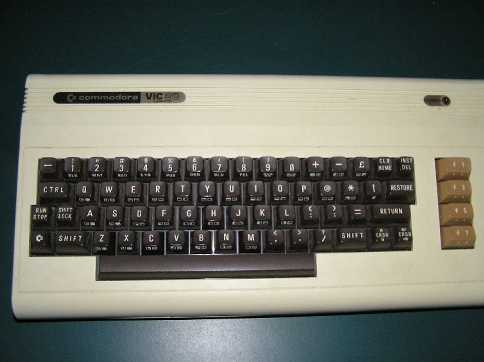





|
NAME |
VIC 20 |
|
MANUFACTURER |
Commodore |
|
TYPE |
Home Computer |
|
ORIGIN |
U.S.A. |
|
YEAR |
May 1981 |
|
END OF PRODUCTION |
January 1985 |
|
BUILT IN LANGUAGE |
CBM Basic V2 |
|
KEYBOARD |
Full-stroke keyboard, 4 function keys, 66 keys |
|
CPU |
Commodore Semiconductor Group 6502A |
|
SPEED |
1.0227 MHz |
|
COPROCESSOR |
VIC-I (6560) for sound and graphics. |
|
RAM |
5 KB (3583 bytes free), expandable up to 32 KB |
|
VRAM |
(shared regular RAM) |
|
ROM |
16 KB═ |
|
TEXT MODES |
23 rows x 22 columns |
|
GRAPHIC MODES |
184 x 176 |
|
COLORS |
8 character colors, 16 background/border colors |
|
SOUND |
3 voices / 3 octaves |
|
SIZE / WEIGHT |
40.3 x 20.4 x 7.2 cm / 1,8 Kg |
|
I/O PORTS |
1 joystick port, 1 user port, 1 serial port, 1 cartridge port, RGB output, tape interface |
|
POWER SUPPLY |
External power supply unit, 18 Watts |
|
PRICE |
$299.95 (1981, U.S.A.) |
|
Commodore VIC-20
|
|
Commodore VIC-20 |
|
behind the usage of the number 20, other than the fact that it was close to the 22 characters per line and to
the combined RAM and ROM memory in the machine (5 KB RAM + 16 KB ROM).
|
